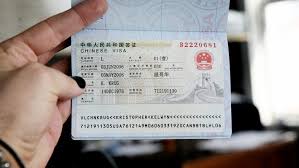In the intricate web of international travel, the United States stands as a prominent gateway, welcoming millions of travelers each year. However, for some, the journey to their final destination involves a temporary stopover on American soil. This is where the USA transit visa comes into play. Designed to facilitate seamless transit through US airports for individuals en route to another country, the transit visa serves as a vital instrument in the realm of global mobility.
What is a Transit Visa?
A transit visa is a temporary travel document issued to individuals who need to pass through a country, usually en route to their final destination. In the context of the United States, the USA transit visa permits travelers to transit through American airports for a limited period without entering the country’s territory. It is essential for individuals who are not citizens of visa waiver program (VWP) countries or those ineligible for ESTA (Electronic System for Travel Authorization).
Types of USA Transit Visas
The USA transit visa comes in two primary forms: the C-1 transit visa and the C-1/D combination visa.
- C-1 Transit Visa:
- The C-1 transit visa is issued to individuals traveling through the United States to a third country with a connecting flight or other transportation arrangements.
- It allows for a short stay in the US, typically no longer than 29 days, solely for the purpose of transit.
- Holders of the C-1 visa are not permitted to leave the airport or seaport during their layover unless they also possess a visitor visa (B-1/B-2) or another applicable visa type.
- C-1/D Combination Visa:
- The C-1/D combination visa is specifically for crew members of airlines or ships who require entry into the United States as part of their duties.
- It allows crew members to transit through the US to join a ship or aircraft, as well as perform their work-related duties during their layover.
- Similar to the C-1 visa, holders of the C-1/D visa are generally restricted to staying in the port or airport during their transit.
Eligibility Criteria for USA Transit Visa
To obtain a USA transit visa, applicants must meet certain eligibility requirements, including but not limited to:
- Having a valid passport that will remain valid for at least six months beyond the intended period of stay in the US.
- Demonstrating the intent to transit through the United States to reach a final destination outside the country.
- Providing evidence of sufficient funds to cover expenses during the transit period.
- Possessing a confirmed onward ticket to the final destination.
Application Process
The process of applying for a USA transit visa involves several steps, including:
- Completing the online nonimmigrant visa application (Form DS-160) and paying the required application fee.
- Scheduling an interview appointment at the nearest US embassy or consulate.
- Attending the visa interview and providing supporting documents, such as passport, photograph, travel itinerary, and proof of visa eligibility.
- Undergoing biometric data collection, which may include fingerprinting and digital photographing, as part of the visa application process.
Tips for a Successful USA Transit Visa Application
Navigating the visa application process can be daunting, but here are some tips to increase your chances of success: USA VISA ELIGIBLITY QUESTIONS
- Apply for the transit visa well in advance of your intended travel date to allow for processing time.
- Ensure that all information provided in the visa application is accurate and consistent with supporting documents.
- Be prepared to explain your travel itinerary and demonstrate your intent to transit through the US to a third country.
- Dress appropriately for the visa interview and answer questions confidently and truthfully.
- Provide any additional documents requested by the consular officer to support your visa application.
Conclusion
The USA transit visa serves as a vital tool for travelers making connections through American airports or seaports on their way to other destinations. Whether you’re a tourist exploring the world or a crew member fulfilling your professional duties, understanding the intricacies of the transit visa process is essential for a smooth and hassle-free journey. By familiarizing yourself with the types of transit visas available, meeting the eligibility criteria, and following the application process diligently, you can navigate through the gateway of the United States with confidence and ease.

